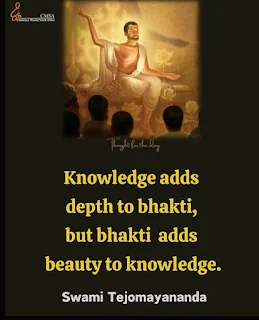https://youtu.be/AaRyGJxpCqY?si=hJeYP6JAPWH-En8C
During the Jagannath Rath Yatra in Puri, the Gajapati Maharaja of Odisha — the traditional king of Puri — plays a deeply spiritual and symbolic role. Though the Gajapati is no longer a ruling monarch in the political sense, he is still regarded as the first and foremost servitor (Adya Sevak) of Lord Jagannath.
The King's Role in the Yatra:
1. Chhera Pahanra – Ritual Sweeping
This is the most iconic and sacred duty of the king during the Rath Yatra.
"Chhera" means sweeping, and "Pahanra" means to cleanse.
The Gajapati Maharaja, dressed in simple white clothes and barefoot (symbolizing humility), comes to the chariots with a golden broom and sweeps the platform of each chariot (Nandighosa of Jagannath, Taladhwaja of Balabhadra, and Darpadalana of Subhadra).
He sprinkles sandalwood-scented water and flowers during this ritual.
Significance: This act symbolizes that in the eyes of the Lord, all are equal — even the highest king is but a humble servant of God.
2. Royal Attendance and Supervision
The king oversees many aspects of the Rath Yatra preparations.
His symbolic presence ensures the smooth functioning and sanctity of the festival.
3. Performance of Ritual Duties
The Gajapati also performs other temple rituals during the festival days, including offerings, prayers, and presence during key events, though he cannot enter the sanctum (due to ritual restrictions).
The king’s role during the Yatra reflects bhakti (devotion) and dasanattva (servitude).
It’s a unique moment in history when a monarch, revered by many, kneels before the Lord — reinforcing the equality of all before the divine.
In the grand Rath Yatra of Lord Jagannath in Puri, Odisha, three majestic chariots are built anew every year for the three deities: Lord Jagannath, Balabhadra, and Subhadra. Each chariot has its own name, color, number of wheels, guardian deities, and names of horses. Below are the detailed descriptions:
1. Lord Jagannath's Chariot: Nandighosha (or Garudadhwaja / Kapidhwaja)
Chariot Name: Nandighosha
Color: Red and Yellow
Number of Wheels: 16
Height: About 45 feet
Flag: Garuda (eagle) emblem
Charioteer (Sarathi): Daruka
Horse Names:
Shankha (white)
Balahaka (white)
Swarna (white)
Haridashwa (white)
Guarding Deity: Hanuman
Rope Name (used to pull): Shankhachuda
2. Balabhadra's Chariot: Taladhwaja
Chariot Name: Taladhwaja
Color: Red and Green
Number of Wheels: 14
Height: About 44 feet
Flag: Palm tree (Tala)
Charioteer: Matali
Horse Names:
Tivra
Ghora
Dirghasharma
Swarnanava
Guarding Deity: Narasimha
Rope Name: Basuki
3. Subhadra's Chariot: Darpadalana (or Devadalana / Padmadhwaja)
Chariot Name: Darpadalana
Color: Red and Black
Number of Wheels: 12
Height: About 43 feet
Flag: Lotus emblem
Charioteer: Arjuna
Horse Names:
Rochika
Mochika
Jita
Aparajita
Guarding Deity: Vanadurga / Chamunda
Rope Name: Swarnachuda
Other Details:
The chariots are constructed fresh each year using wood from specific trees like Phasi, Dhaura, etc.
Over 1000 artisans, including carpenters, painters, and sculptors, are involved in making them.
No nails or metal parts are used; traditional wooden joinery methods are followed.
The Rath Yatra usually falls in June–July (Ashadha month).
The journey starts from the Jagannath Temple to the Gundicha Temple, a distance of about 3 km.
“The Chariot of the Lord”
(A poem on Lord Jagannath’s Rath Yatra)
Drums resound, the conch shells blow,
On Puri's path, the chariots glow,
Three tall towers of wood and grace,
Move through the crowd, a holy pace.
Jagannath rides on Nandighosha, bright,
Cloaked in yellow and red delight.
Garuda flies upon his flag,
The Lord who rules with gentle swag.
Balabhadra strong, in green and red,
Taladhwaja where lions tread.
The palm tree soars upon his mast,
He guards the path, serene and vast.
Subhadra shines in black and red,
Her chariot, Darpadalana is led
By horses fierce, yet gently drawn,
The goddess rides like rising dawn.
White steeds neigh in rhythm deep,
As ropes of love the people keep,
No rich or poor, no caste, no line—
All souls are equal, all divine.
They pull with cries of “Jai Jagannath!”
The Lord of Cosmos clears their path,
Through sweat and tears and heartfelt song,
The wheels of mercy roll along.
For once the Lord comes out to see,
His children’s world—both bond and free.
He leaves His shrine, His royal seat,
To walk with dust beneath His feet.
O soul, rejoice! For now is near,
The time when love dissolves all fear.
The chariot rolls, the heart shall sway,
With God Himself upon the way.
The Ratha Yatra (Chariot Festival) at Puri typically spans 9 days. Here's a breakdown of the key events:
Day 1 – Ratha Yatra (Gundicha Yatra)
Lord Jagannath, Balabhadra, and Subhadra leave the main Jagannath temple and travel in three grand chariots to the Gundicha Temple, about 3 km away.
This marks the beginning of the journey.
Days 2 to 8 – Stay at Gundicha Temple
The deities stay at Gundicha Temple for 7 days.
During this time, they receive seva (worship) in a special relaxed mood, often described as a vacation from the main temple.
Day 9 – Bahuda Yatra (Return Journey)
On the 9th day, the deities return to the Jagannath Temple in their chariots.
On the way, they stop at Mausi Maa Temple, where they are offered Poda Pitha, a special baked delicacy.
After Return – Suna Besha (Golden Attire)
The day after Bahuda Yatra, the deities are dressed in gold ornaments, called Suna Besha. This draws massive crowds.
So, the main journey itself lasts 9 days, but the full cycle including associated rituals can stretch over 11 to 12 days depending on the calendar and temple traditions.














